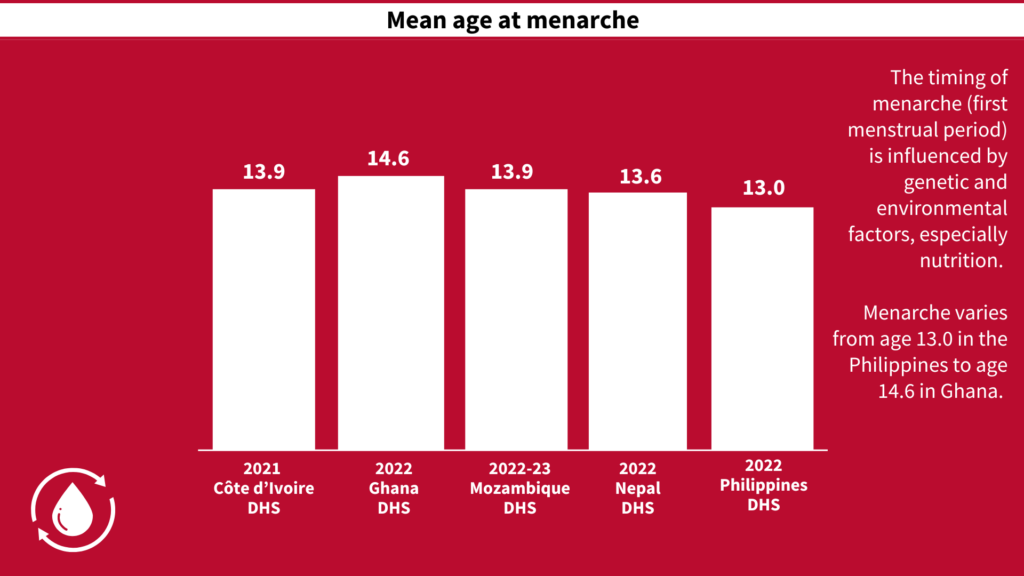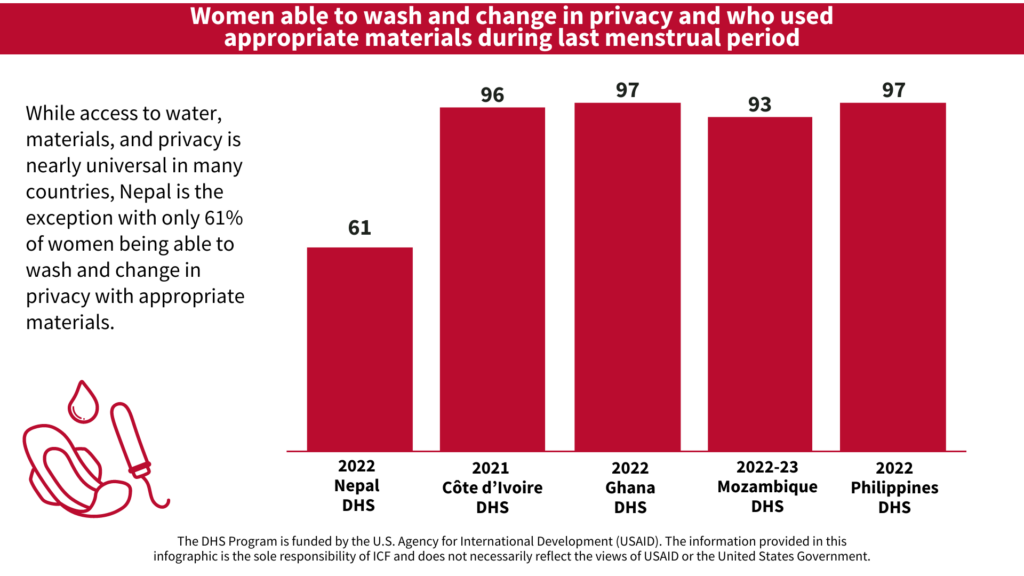New Menstruation Data for International Menstrual Hygiene Day

Today, May 28, 2024, is the 10th anniversary of International Menstrual Hygiene Day. Living free of taboos and stigma about menstruation, and having access to quality menstrual products, accurate information and education, and privacy and cleanliness — these are not necessarily givens in many parts of the world.
As of 2019, the DHS-8 woman’s questionnaire now standardly asks about age at first menstruation. The onset of menarche is the beginning of sexual maturity in adolescent girls, marking the start of their first menstrual flow. Mean age at menarche can be calculated. The average age of first menstruation among women age 15-49 in the Philippines is 13.0 years, compared to 14.6 years in Ghana.
DHS-8 surveys also ask about menstrual hygiene, specifically materials used during menstruation and whether women were able to wash and change in privacy and if they were able to wash and change in privacy and used appropriate materials during their last menstruation. Data users should note that what qualifies as “appropriate materials” may vary depending on the country.
A quick search of “menstrual” in The DHS Program Survey Questions Database reveals that DHS surveys in India have collected data on menstruation since 1992. The 2019-21 India National Family Health Survey collected data on methods used for menstrual protection from women age 15-24. In India, 78% use a hygienic method of protection, including locally prepared napkins, sanitary napkins, tampons, and menstrual cups. Sanitary napkins are the most popular method, with 64% of women age 15-24 using them. Still, 50% of young women in India use cloth during their menstrual period, which is unhygienic and can be deadly. Aimoni Tumung, the Pad Woman of Assam, is working to break taboos around menstruation. “Without menstruation, there would be no human race. It is something that happens to a woman every month, and yet we hide it; we neglect it. This is a natural right that every woman should have. We need to be able to talk about it without any shame,” Tumung explains.
Based in part on these data, the Union Health Ministry of India is working to develop a national menstrual hygiene policy that “seeks to ensure access to safe and hygienic menstrual products, improve sanitation facilities, address social taboos, and foster a supportive environment.” By collecting data on menstruation, policy makers and program managers can see how well girls and women are going about their everyday lives — doing household chores and going to work and school — while managing their menstrual hygiene. This information can be used to improve conditions for girls and women for a #PeriodFriendlyWorld.
Click the infographic below to explore the indicators on STATcompiler, and share on Facebook and X to engage in this global conversation!




